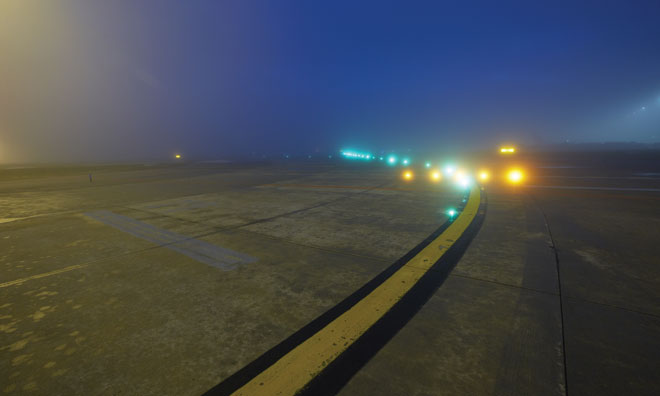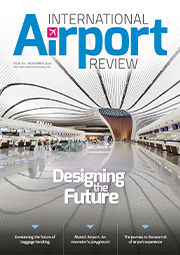LEDs for airfield lighting: A medley of human factors
- Like
- Digg
- Del
- Tumblr
- VKontakte
- Buffer
- Love This
- Odnoklassniki
- Meneame
- Blogger
- Amazon
- Yahoo Mail
- Gmail
- AOL
- Newsvine
- HackerNews
- Evernote
- MySpace
- Mail.ru
- Viadeo
- Line
- Comments
- Yummly
- SMS
- Viber
- Telegram
- Subscribe
- Skype
- Facebook Messenger
- Kakao
- LiveJournal
- Yammer
- Edgar
- Fintel
- Mix
- Instapaper
- Copy Link
Posted: 20 September 2016 | John D. Bullough,Lighting Research Center, Rensselaer Polytechnic Institute | No comments yet
The use of light emitting diodes (LEDs) in airfield lighting has numerous benefits but it is important for airports to also consider the impact of the unique visual properties of LED lighting to pilots and those working on the airfield. John D. Bullough of the Lighting Research Center at Rensselaer Polytechnic Institute considers these human factors of LED lighting.


As light emitting diode (LED) sources are increasingly employed for airfield lighting, they have largely delivered on the anticipated promise of reduced energy use and lower maintenance costs to airports that have installed them, as recent articles in International Airport Review have testified1,2. LEDs differ from incandescent light sources that have traditionally been used for airfield lighting, however, in several important ways relevant to visual perception3:
- Coloured LEDs produce narrowband spectral distributions resulting in very saturated colour appearance without having to filter their light output.
- White LEDs can produce higher correlated colour temperatures (CCTs) than the warm white light produced by incandescent sources
- LEDs can switch on and off nearly instantaneously, allowing for efficient digital control of intensity using rapid switching, called pulse width modulation (PWM).
These differences can make LED airfield lighting installations look different from similar installations equipped with incandescent equipment. In fact some pilots in the U.S. have raised questions about the appearance of LED lighting systems, including:
- Whether LED lighting systems are brighter and potentially more glaring than incandescent systems
- Whether both colour-normal and colour-deficient pilots can correctly identify LED colours
- Whether light from LEDs scatters more in fog or haze than light from incandescent sources
- Whether LEDs operated using PWM can interact with rotating propellers to create distracting flicker effects.
In the U.S. the Federal Aviation Administration (FAA) has taken these concerns seriously, engaging in research and demonstration activities to assess the impacts of the unique visual properties of LED lighting. With apologies to Manfred Mann, Cyndi Lauper, the Marshall Tucker Band and Men Without Hats for the following subheadings, this article summarises several of those activities in order to share objective information about the human factors of LED airfield lighting.
The rest of this article is restricted - login or subscribe free to access


Why subscribe? Join our growing community of thousands of industry professionals and gain access to:
- bi-monthly issues in print and/or digital format
- case studies, whitepapers, webinars and industry-leading content
- breaking news and features
- our extensive online archive of thousands of articles and years of past issues
- ...And it's all free!
Click here to Subscribe today Login here













